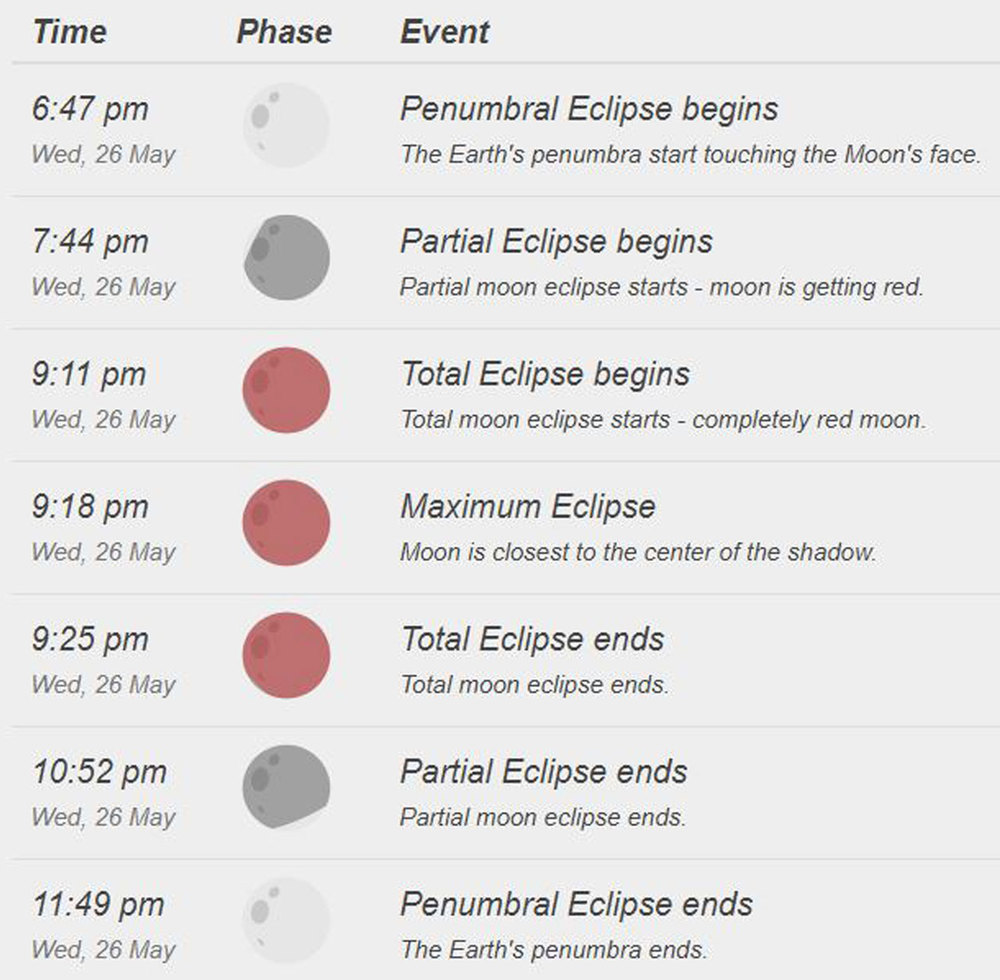Rare 'blood moon' total eclipse will appear in our skies tonight
Liina Flynn
26 May 2021, 1:24 AM

A rare total lunar eclipse of the full moon, called a 'super flower blood moon', will appear in our skies tonight, Wednesday, May 26.
Tonight’s spectacle was last witnessed in 2015 and was not visible from Australia. Tonight, it will only be visible from the Pacific Ocean, Australia, Asia and large parts of the Americas. The next one predicted will be on May 16, 2022 and will only be visible in North America, South America, Europe and Africa.
Read more news: Korean fried chicken shop opens with secret spices and night dining
So why is tonight’s skywatching event called a super flower blood moon?
Lunar eclipses are called ‘blood moons’ when the moon darkens and turns a dull red as it passes into Earth's shadow.
When a full moon occurs in May, they are known as flower moons – and when the full moon reaches the point closest to our planet on its elliptical orbit, it's called a supermoon, and appears larger than usual in the sky.
The term blood moon is also sometimes used to refer to four total lunar eclipses that happen in the span of two years - a phenomenon astronomers call a lunar tetrad.
When does the eclipse begin?
The lunar eclipse will begin at 6.47pm tonight, when the moon goes into the earth’s lightest shadow (or penumbra). At this point, the eclipse will be barely visible, and the resulting shadow is called penumbral. The eclipse will finish at 10.52pm.

Read more news: Rental crisis sends fulltime workers to live in Lismore caravan park
Why does the moon turn red?
When the lunar eclipse begins and the Moon travels through the Earth’s umbra, it obstructs all direct sunlight from illuminating the Moon’s surface.
Despite this, some sunlight still reaches the lunar surface indirectly, through the Earth’s atmosphere, radiating the Moon in a reddish, yellow, or orange glow.
This creates a phenomenon called Rayleigh scattering, where a few colours in the light spectrum are filtered out, leaning more towards the violet spectrum.
This happens when the sun rays pass through the atmosphere. The same mechanism is the cause of colorful sunrises and sunsets.
The red wavelengths are barely affected by this effect, so the light reaching the Moon’s surface has a reddish hue, which allows the fully eclipsed Moon to acquire a red color.
The Moon can also look yellow, orange, or brown during a total lunar eclipse which depends on the composition of the atmosphere where the varied parts of the light spectrum are filtered.
